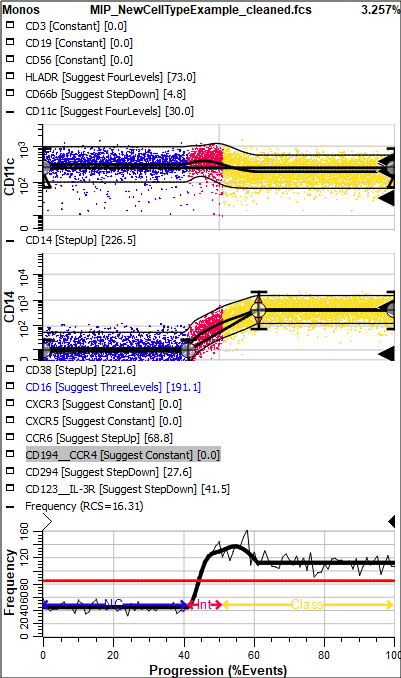
The Cell Type widget contains the stack of Expression Profile plots that define a cell type in the model.

You can expand and collapse expression profiles within the widget for better visualization of the data. To collapse a profile that is showing, click the "shrink" icon next to the measurement name on the left edge. To expand a profile that is hidden, click the "expand" icon next to the measurement name.
Click to Shrink |
|
Click to Expand |
|
When you click on an expression profile, the profile becomes the active profile. You can edit its properties in the Expression Profile Properties panel, or by right-clicking and choosing Edit Expression Profile to edit the most common properties.
The Frequency Plot provides information about how well the model is working. The Y-axis shows frequency of events, and the X-axis shows the Progression axis. A bold red horizontal line shows the optimal frequency across the progression axis. The optimal frequency is computed by dividing the number of events by the number of states on the Progression axis. In other words, the ideal model would put the same number of events into each state of the progression.
The jagged black line shows the actual number of events that have been assigned to each state for this cell type. For a model that matches the data well, the black line will follow the red line, bouncing slightly over and under the red line. In places where the black line is significantly above the red line, there are too many events being assigned to those states. Conversely, where the black line falls well below the red line, there are not enough events assigned. This relationship helps identify which Expression Profiles need to be adjusted. In general, when there are too many or too few events in a portion of the Frequency Plot, review the Expression Profiles with control points and transitions in those states. Examine those profiles to be sure the control points are properly positioned.
The Frequency Plot also shows the Reduced Chi Square (RCS) of the model and the stages that have been defined.